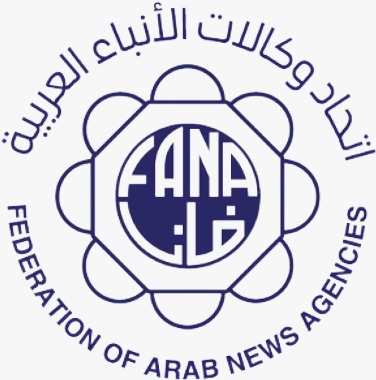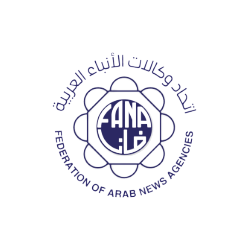
-
Arab-China Cooperation Forum to hold seventh edition on radio and television2 November 2025

-
Kuwait environmental sustainability constitutes developmental strategic pillar,

-
Qatar’s Nature Reserves: Enhancing Sustainability of Ecosystems, Preserving Wildlife

-
E-Waste Recycling: A Win-Win for the Environment and the Economy


Oman Vision 2040: Five Years of Transformational Achievement Across National Sectors
Oman Vision 2040:
Five Years of Transformational Achievement Across National Sectors
Muscat, 19 Nov
2025 (ONA) — The initial five-year phase of Oman’s Vision 2040 has culminated
in the realization of over one hundred distinct national accomplishments
spanning its four fundamental pillars. According to data released by the
Vision’s implementation tracking unit, this period witnessed the execution of
hundreds of strategic projects, initiatives, and programs that have tangibly
advanced the nation’s developmental priorities. These wide-ranging endeavours
are framed within four core pillars: Society and People; Economy and
Development; Environment and Sustainability; and Governance and Institutional
Performance.
The tangible
outcomes of these national projects are manifested through enhanced
services—including modern schools, hospitals, road networks, and public
facilities—that collectively elevate living standards across every governorate.
They have fostered a more diversified economic landscape, driven by strategic
investments and new opportunities that stimulate nationwide growth. Significant
progress is also evident in environmental sustainability, supported by green
initiatives that preserve natural ecosystems while contributing to economic
value. A comprehensive digital transformation has streamlined governmental transactions,
making them more accessible and transparent. Furthermore, these years have
showcased inspiring narratives of individual achievement, highlighting citizens
who exemplify national values of creativity and dedication.
The Society and
People pillar has served as the foundational cornerstone for numerous
initiatives targeting educational advancement, national capacity-building, a
world-class healthcare system, strengthened national identity, and a robust
social welfare framework that ensures a dignified life for all citizens. Within
education, a radical transformation is underway across both general and higher
education. From 2021 to 2025, 188 schools were constructed or refurbished, a
comprehensive plan to digitize curricula for grades 1-12 was implemented, and
the ‘Noor’ e-learning platform was launched, providing high-quality,
interactive digital educational content accessible to students from any
location. The initial phase has integrated 140 schools. A vocational and
technical education track for grades 11-12 has also been initiated across nine
specializations, including Business Administration and Information Technology
in Muscat and North Al Batinah, and Travel and Tourism in Dhofar and A’Dakhiliyah.
In higher
education, the University of Technology and Applied Sciences was established
through the consolidation of technical colleges, colleges of applied sciences,
and A’Rustaq College of Education. The university now serves over 48,000
students across 11 branches and offers 48 academic specializations. The
innovation sector recorded notable achievements, including the founding of the
Industrial Innovation Academy, which comprises six strategic programs. Over
three years, 360 young Omanis have qualified as “Industrial Innovation
Specialists,” with more than 40 national factories and companies
benefiting from the Academy’s services.
Healthcare
infrastructure witnessed substantial development with the opening of Al
Mazyunah Hospital in Dhofar and the construction of three new hospitals: the
new Sultan Qaboos Hospital in Salalah, A’Suwaiq Hospital, and Khasab Hospital,
alongside the expansion of Sohar Hospital. These facilities add over 1,800
hospital beds at a construction cost exceeding RO 300 million. The past five
years also saw the establishment of the University Medical City, the Medical
City for Military and Security Services, the Central Public Health Laboratory,
and several private hospitals, including Oman International Hospital and Al
Saada Hospital. New cardiac catheterization units became operational at Sohar
and Nizwa hospitals, an Intravenous Solution Preparation Unit was created at
Sultan Qaboos University Hospital, the Muscat Recovery Center was established,
and several pharmaceutical factories were launched to localize drug
manufacturing, meet domestic demand, and boost non-oil exports.
The health sector
achieved remarkable medical milestones performed by national medical teams,
including the separation of conjoined twins, a heart transplant from a
brain-dead donor, a tumor resection using an awake craniotomy technique, and a
cochlear implant for a nine-week-old infant.
Cultural
development under the Welfare and Social Protection priority included the
establishment of the Oman Cultural Complex in Muscat, the Oman Maritime History
Museum in the Wilayat of Sur, the Oman Across Ages Museum in the Wilayat of Manah,
the Oman’s Glories Museum in the Wilayat of Sohar, the Fateh Al Khair Center in
Sur, and the Bisya and Salut Visitor Center in the Wilayat of Bahla. Several
international cultural events promoted messages of peace and coexistence from
Oman to the world, including the ‘Oman Corner’ at the Hermitage Museum in Russia,
featuring 28 artifacts reflecting Oman’s ancient heritage. The “Message of
Peace from the Sultanate of Oman” exhibition was displayed at over 136
global locations, with its materials translated into 29 languages.
Social initiatives
featured the creation of the Social Protection Fund, serving over 1.45 million
beneficiaries by August 2025, with 598,000 actively insured Omanis. The
National Autism Center was established to provide high-quality rehabilitation
and therapy from childhood through adulthood, currently serving 222 individuals
with autism spectrum disorder through various local and international
partnerships.
The Economy and
Development pillar concentrated on building a prosperous, diversified, and
sustainable economy, stimulating private investment, and fostering inclusive
growth across all governorates. Economic diversification efforts featured new
mining projects such as the Al Shuwaimiyah Metal Industries project in Shaleem
and the Halaniyat Islands, targeting 40 million tons annually of limestone,
gypsum, and dolomite; the Silica Sand project; Al Washihi Mine; Al Ghizain Mine;
and copper and gold exploration in Block 10 in the Wilayat of Yanqul, alongside
the redevelopment of the Al Aseel and Al Bayda copper mines.
The heavy and
medium industries sector celebrated major milestones, including the
inauguration of Duqm Refinery in 2024 with an initial capacity of 230,000
barrels per day, later increased to 255,000 bpd in 2025. Other significant
projects launched include the Salalah Ammonia Plant (365,000 metric tons
annually), Karwa Motors factory in the Wilayat of Duqm, a Vanadium and Niobium
Ingots factory supplying international markets, a Metallurgical Silicon plant,
and an Aluminium Wheel plant in Sohar (1.2 million wheels annually in its first
phase). Intaj Suhar for Advanced Manufacturing was also established, focusing
on reverse engineering, mold manufacturing, and precision tools.
Upcoming
industrial projects include the Polyacrylamide plant in Sohar—the world’s
second-largest polymer production facility with an investment exceeding RO 115.3
million—and the Mawarid Turbine factory in Duqm for wind turbine components
(1,000 MW annual capacity). An Iron Ore Concentrate plant in Sohar is expected
to commence operations in 2027.
Infrastructure
development under the Oman Vision 2040 included the 725-km Rub’ al-Khali Road,
the 71-km Sultan Faisal bin Turki Road (Diba-Lima-Khasab, 48% complete as of
June 2025), and the 27-km Rusa’il-Nizwa Road expansion. The Asyad Container
Terminal opened in Duqm, and the Hafeet Railway Company—a joint Omani-Emirati
venture—established a 238-km line linking Abu Dhabi and Sohar with a 100-minute
travel time.
Tourism projects
like the Yiti Sustainable City and the 3-km Muttrah Cable Car, expected to
operate in Q1 2026, aim to enhance visitor experiences. Food security
initiatives included an Omani Abalone Aquaculture project in Mirbat (600 tons
annually), a Natural Shrimp Aquaculture project (4,000 tons annually), and an
Omani Wheat Production project in Najd (10,000 tons from over 6,000 acres).
Concurrently,
national capacity-building programs like the Training Linked with Replacement
or Employment project, the National Integrated System for Capacity Building and
Talent Management, and the “Tawteen” platform were launched to
prepare Omani talent for new economic opportunities. The “Invest Oman”
lounge and the “Oman Business Platform” facilitate foreign
investment, offering programs like Investor Residence and Golden Residence. The
Future Fund Oman, capitalized at RO 2 billion, allocates 90% to major projects
and 10% to SMEs, while the Omani Promising Start-ups Programme fosters
entrepreneurship.
Urban development
milestones include the ‘Surouh’ project, developing 18 residential
neighborhoods with 9,950 housing units, and Sultan Haitham City, spanning 14.8
million square meters to accommodate 100,000 residents. The Etlaq Spaceport stands
as the first commercial spaceport in the Middle East and North Africa.
The Environment
pillar prioritized natural resource sustainability through initiatives like the
National Strategy for Carbon Neutrality, encompassing 212 projects and
initiatives until 2025. Hydrogen Oman “Hydrom” company was established to
oversee the green hydrogen sector. Renewable energy projects advanced,
including the 100 MW Amin Solar Photovoltaic Power Plant, the 25 MW Qabas Sohar
solar project, the 500 MW Ibri (2) Solar Power Station, and the Sur
Solar-powered Water Desalination Plant, serving over 600,000 people. The Rima
station treats over 60,000 cubic meters of oil-produced water daily, while the
Manah 1 and Manah 2 stations (1,000 MW total), the Ja’alan Bani Bu Ali wind
project (95-105 MW), the Dhofar 2 Wind Power Plant (50 MW), and other wind
projects in Mahout, Duqm, and Sadah (exceeding 1,000 MW combined) further
diversify the energy mix.
Green industry
projects include the Vulcan Green Steel plant and Vale Global Iron Complex in
Duqm, plus a Waste-to-Energy project in Barka. Green tourism expanded with five
new nature reserves, bringing the total to 31 reserves and 33 environmental
sites. The Botanic Garden in A’Seeb—the largest in the Arab world—houses a
database of 1,200 rare and endangered Omani plant species and over 40 varieties
of fruits, vegetables, and medicinal plants. The Royal Razat Farm tourist path
in Salalah and the Duqm Special Economic Zone nursery, planting 5,000 trees,
further promote environmental awareness.
The “Green
Mobility” initiative, led by the National Green Transport Company,
established an integrated electric transport system aiming to reduce CO2 emissions
by 4.6 metric tons per vehicle. The ship recycling project, the first in the
Gulf, converts end-of-life vessels into reusable materials using eco-friendly
methods, while the clean energy project for ships at Sohar Port and new dams in
multiple governorates enhance environmental sustainability and flood
protection.
The Governance and
Institutional Performance pillar strengthened regulatory systems to bolster
public trust in the judiciary through the Judicial Inspection Bylaw, the
establishment of the Investment and Commerce Court, and a reduction in appeal
processing time from 186 days in 2023 to 136 days in 2024. Remote litigation
via video conferencing was implemented, the Makkah Al-Mukarramah Agreement for
anti-corruption enforcement was signed, and the “Qadhaa” e-portal was
launched for electronic judicial services.
Government
performance was enhanced through the “Tajawob” platform for citizen
feedback and the Unified National Portal for Electronic Government Services,
which processed 14.5 million digital transactions in the first quarter of 2025.
The ” Wosool”
system has over 17,000 active users, and 267 government services are fully
automated. The Government Projects Regulation Bylaw and Government Projects
Management Guide were applied to improve oversight, implementation efficiency,
and optimal use of public resources.
— Ends/Khalid